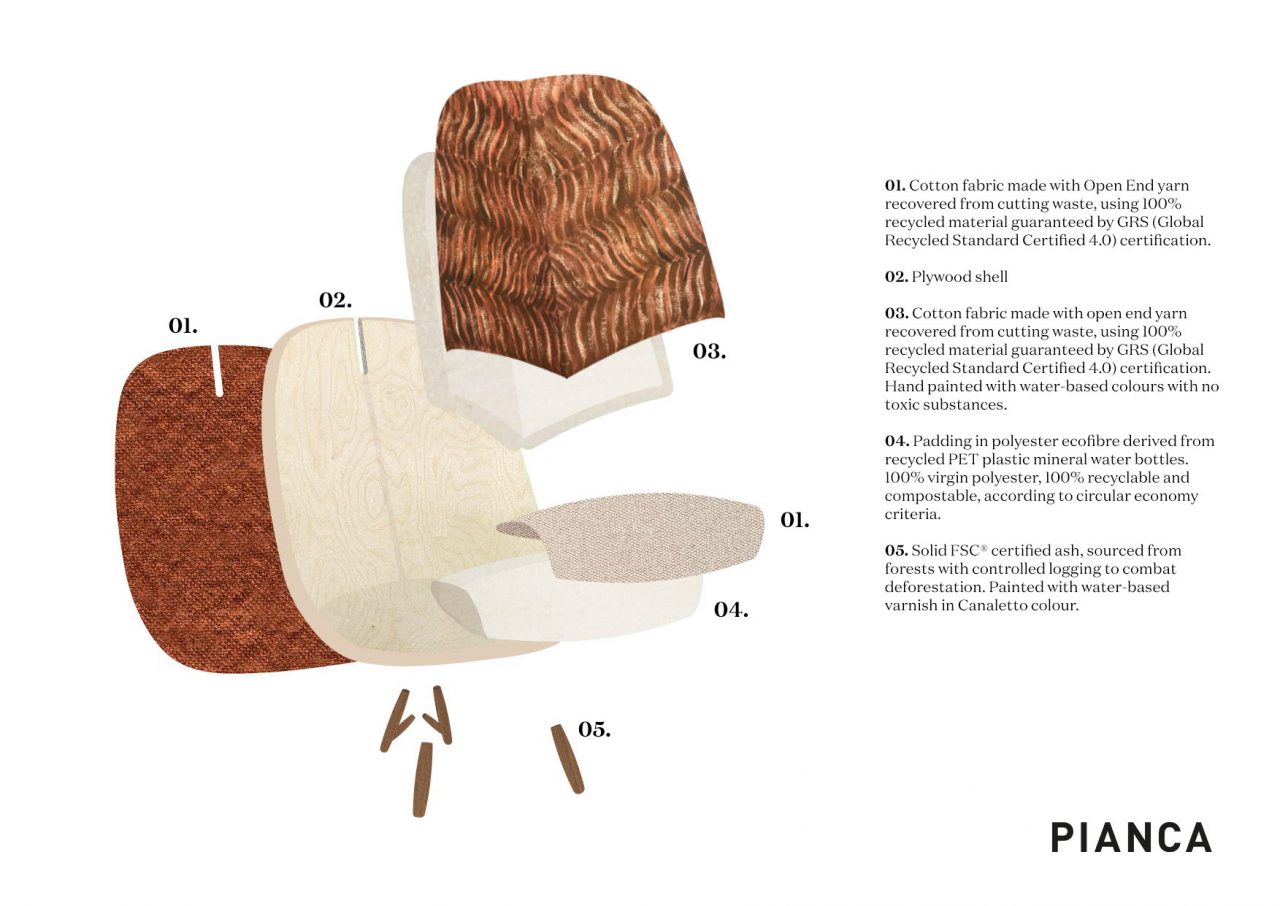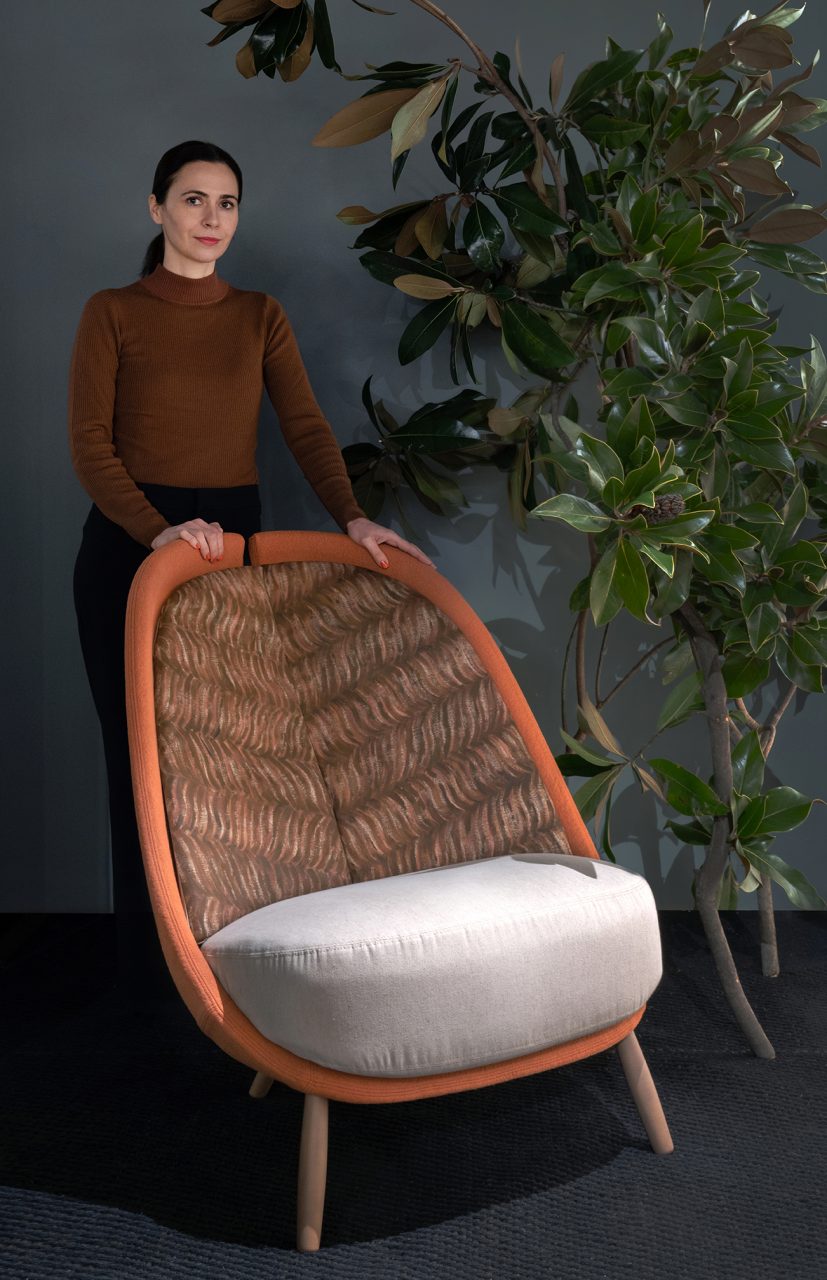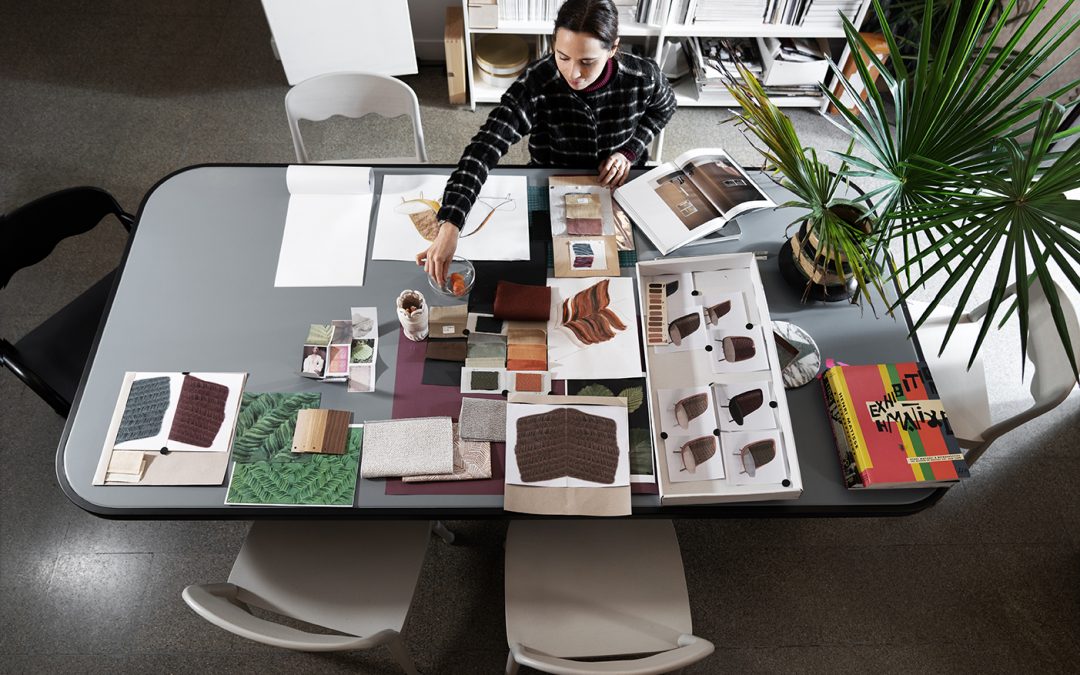Conceived by designer Cristina Celestino, the Calatea Green armchair is the first chair for Pianca to be produced in the light of a circular economy and in so being pays homage to our planet. Every element was reconsidered to reduce the environmental impact of the chair. It’s a product with organic roots and with a design concept that derives from intimate studies in both botany and ergonomics.
Calatea Green is the sustainable edition of the original 2017 Calatea armchair. This new green version uses different materials and an original signature aesthetic redesigned according to circular economy rules.
The padding is polyester ecofibre derived from recycled PET plastic mineral water bottles: made of 100% virgin polyester, it is completely recyclable and compostable, according to circular economy criteria. The shell is made of plywood and the legs are solid, FSC-certified® ash, sourced from certified forests with controlled logging to combat deforestation. Lastly, the upholstery fabric is made using open end cotton yarn from 100% recycled material guaranteed by GRS (Global Recycled Standard Certified 4.0) certification.
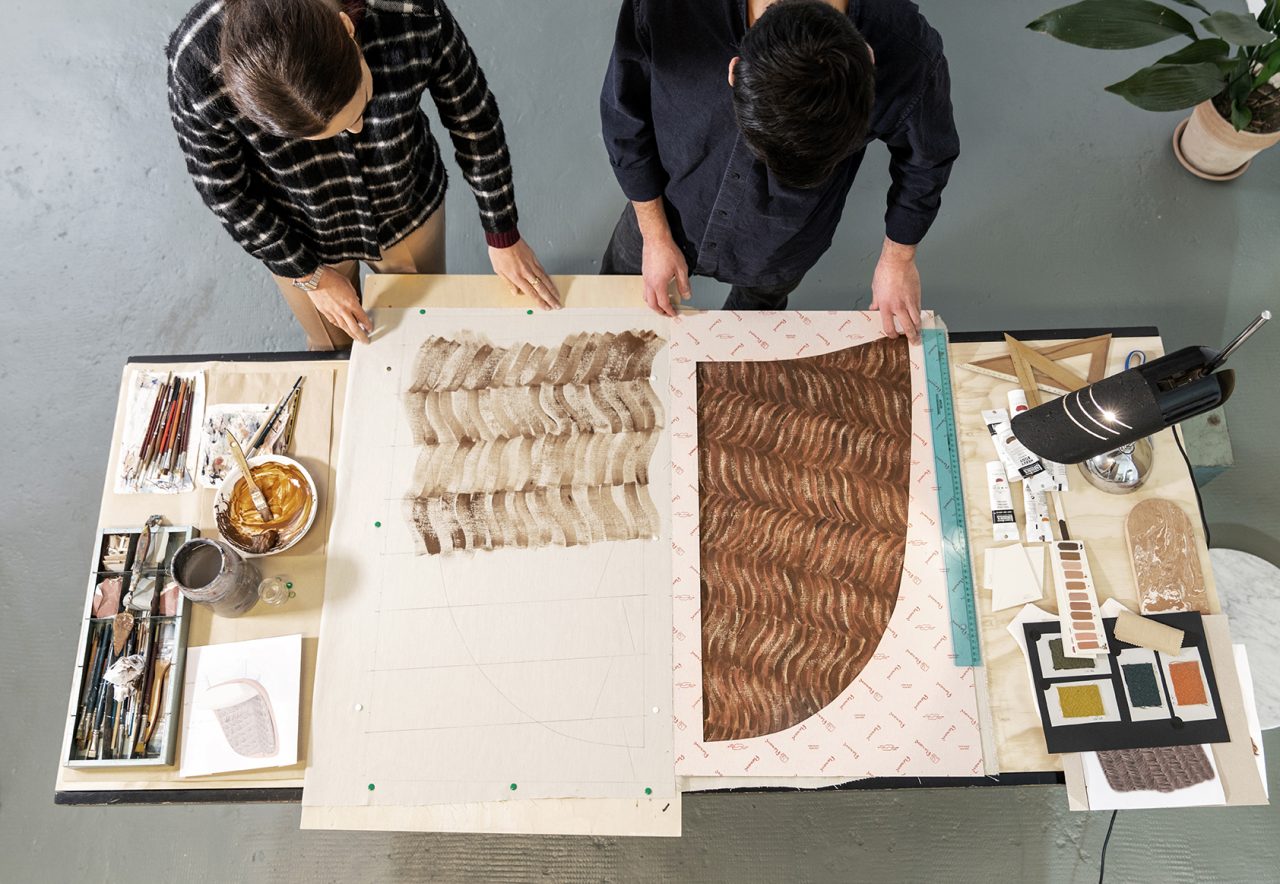
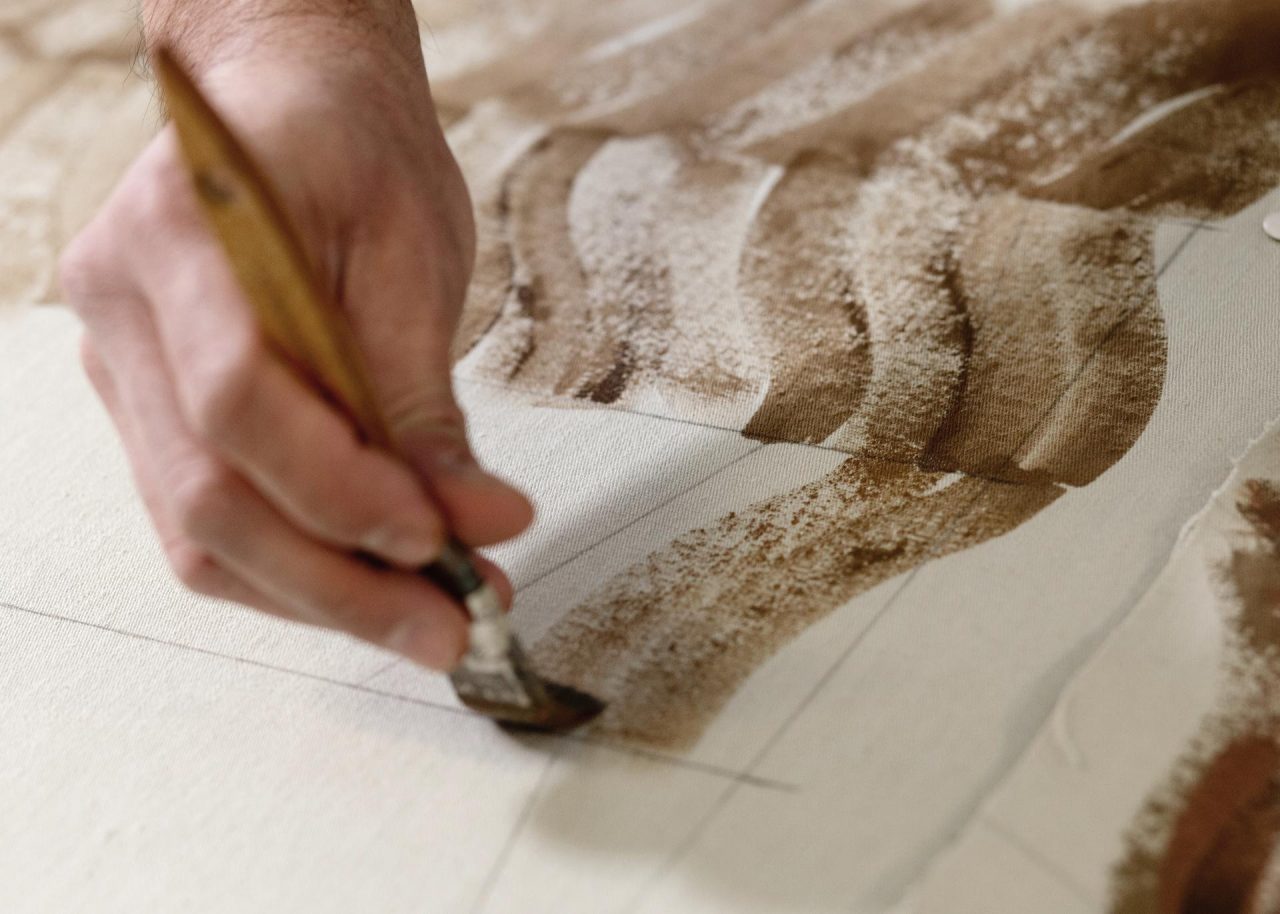
The designer’s ode to nature and sustainability is expressed in the new decorative concept for the backrest fabric, paying tribute to her home region of Friuli Venezia Giulia, Italy and the alder tree, a native hardwood of the Julian Alps; the leaves of which have a distinctive, even-veined texture. The pattern was a source of study and inspiration for the designer who then focused on the work of artist Carla Accardi, particularly her rhythmic brush strokes and style.
The chair was unveiled at Green Pea – the first Green Retail Park in the world – as a unique and distinctly artistic piece. For the occasion, the decorative motif was hand painted on fabric by Alberto Fiocco using water-based colours with no toxic substances.
‘Calatea Green is the natural evolution of an armchair created in homage to the botanical world. Every element of it speaks the language of nature and sustainability and is the bearer of a message that Pianca wants to share with its clients and the design world as part of its long-standing commitment to responsible work processes,’ says designer Cristina Celestino. ‘It’s designed to endure over time, to be iconic, yet respectful of the spaces it helps to furnish; functional and provocative.’
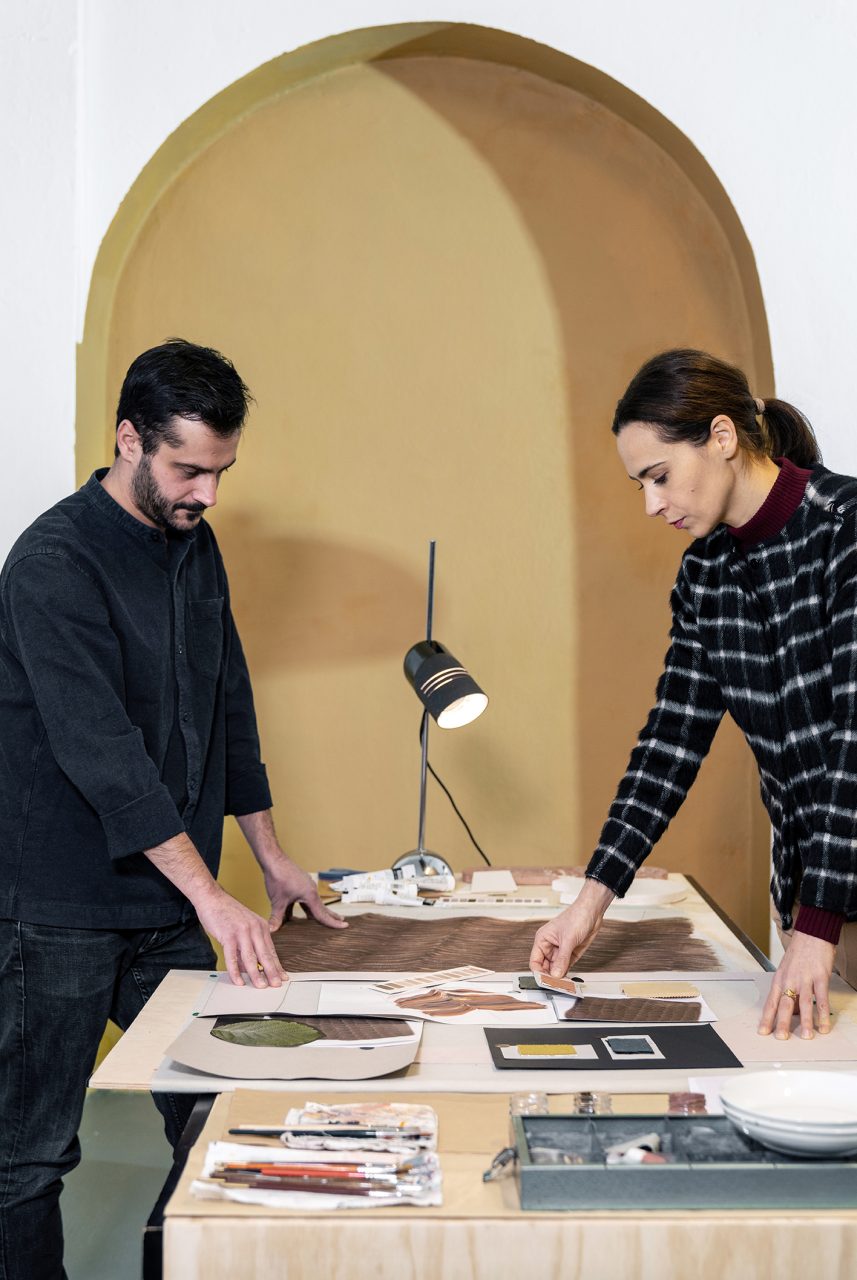
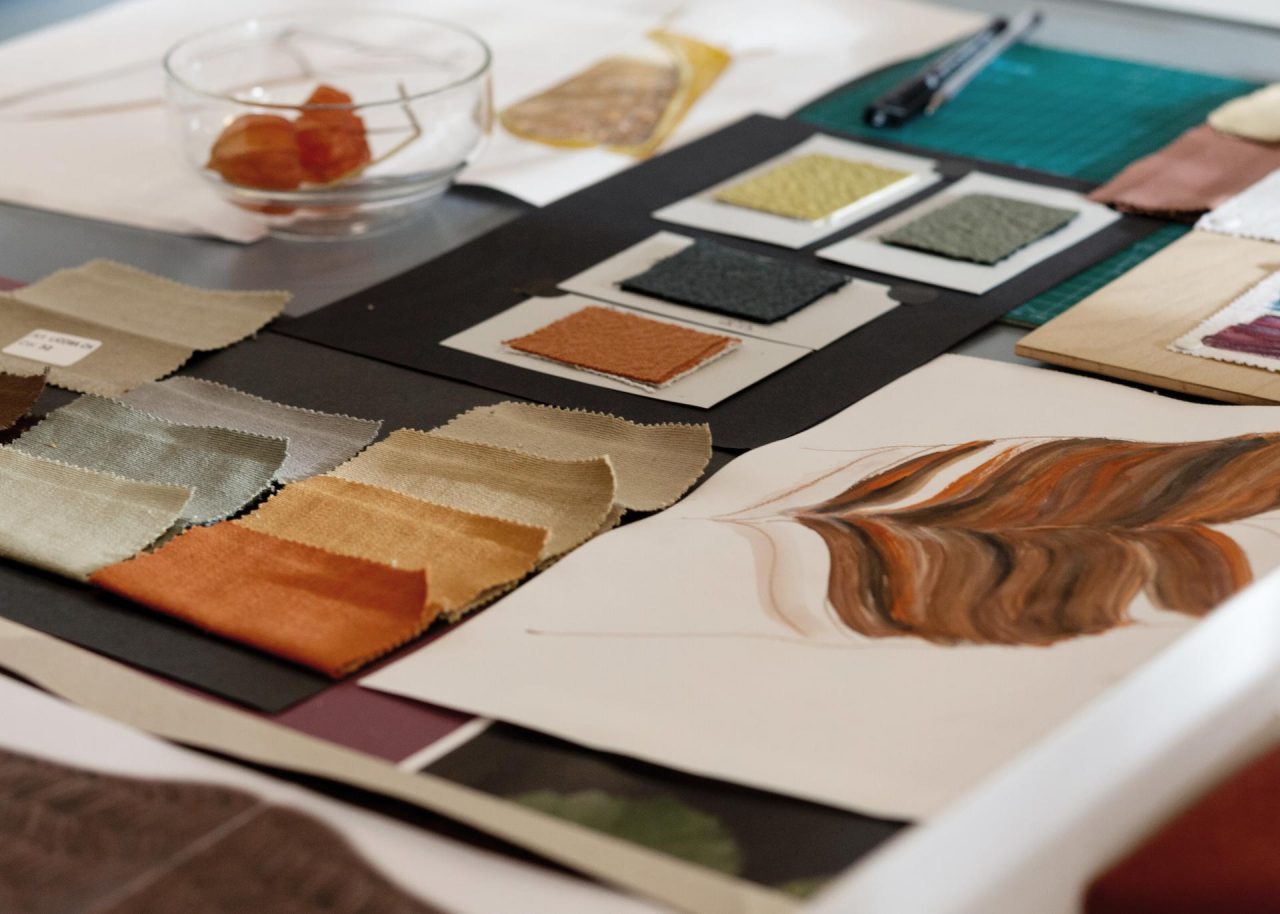
Pianca’s care for the environment starts with the choice of raw materials, traceability along the entire production chain, and continued efforts to improve manufacturing performance, reduce consumption and minimise waste. The manufacturer has been using only compliant, fully-recyclable, eco-friendly packaging for years, produced using 90% recycled materials, with an electronic object-scanning system for maximum reduction in packaging.
In 2011, Pianca installed a photovoltaic system capable of meeting the company’s total energy demand. 4,347 panels generate a 11MWp power output for an overall capacity of more than 1GW (1,150,000KWh). Switching to solar power along with recycling processing waste to generate heat energy has allowed Pianca to reach the important milestone of relying on renewable energy 100%.
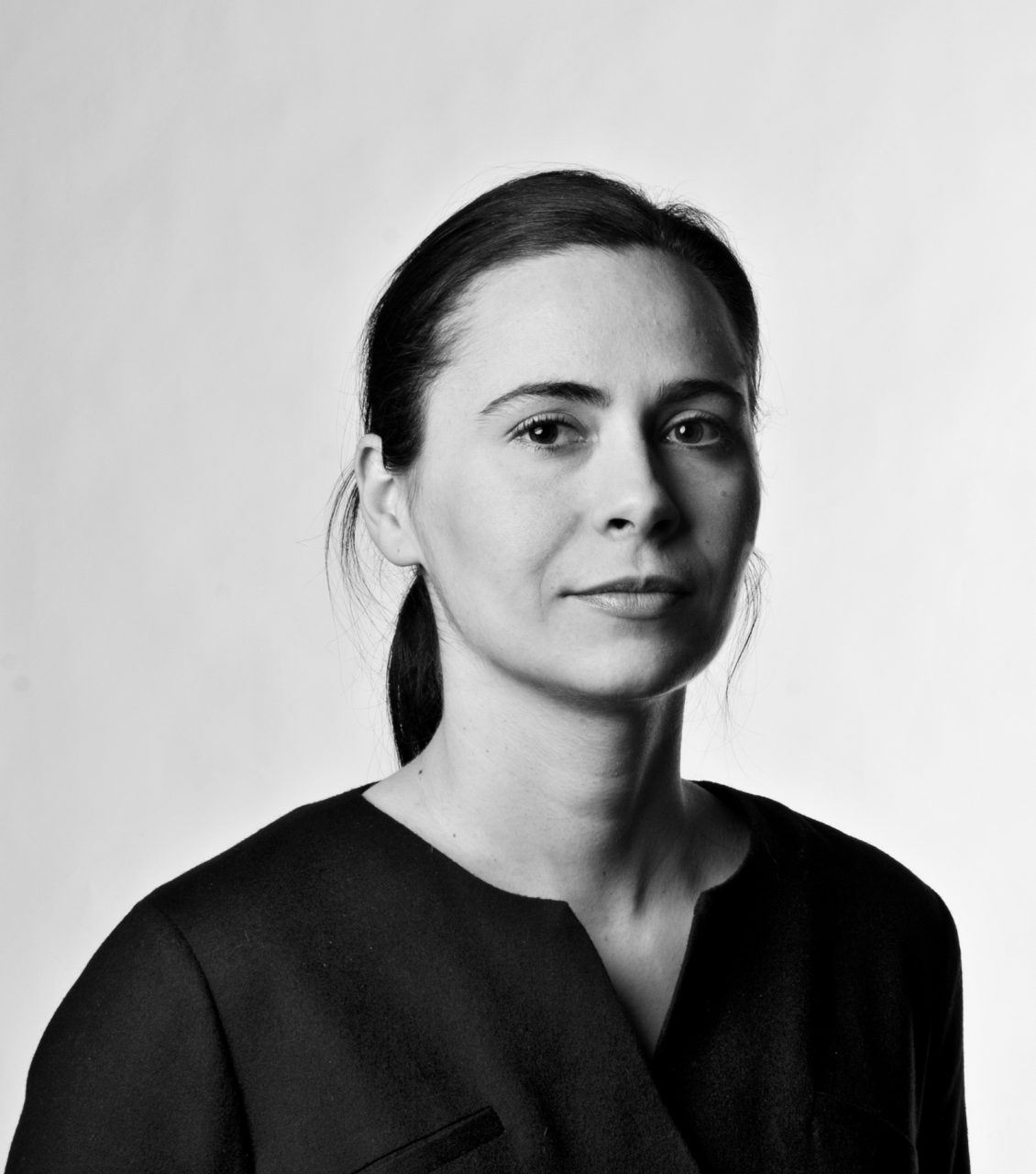
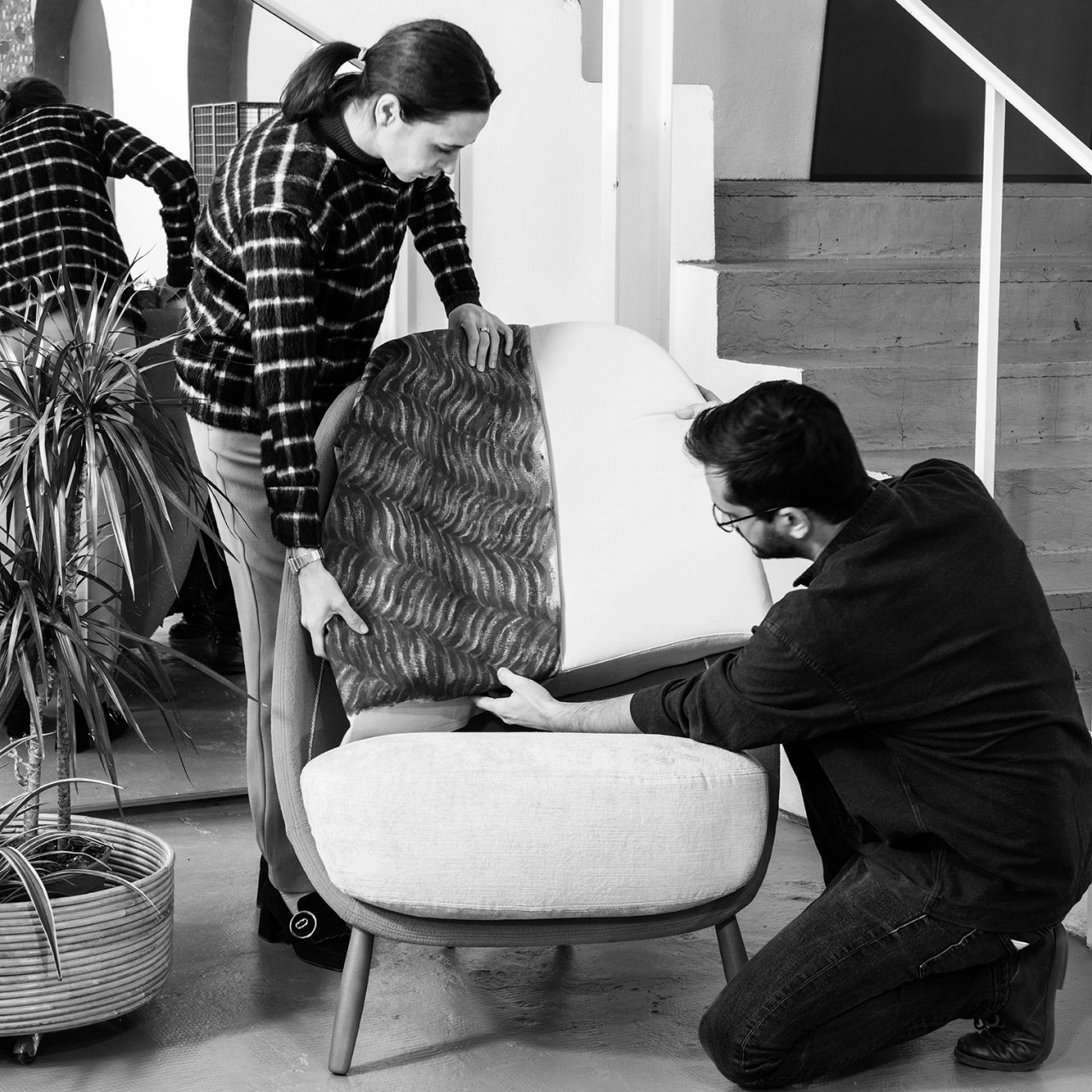
Cristina Celestino was born in Pordenone and after graduating from the School of Architecture at IUAV University of Venice, she worked with prestigious design studios, focusing on interior architecture and design. In 2009 she moved to Milan, founding two years later her brand Attico Design. In 2013 she opened her own design studio. In occasion of DesignMiami/ 2016 Cristina designed The Happy Room collection for Fendi.
Cristina has received many international prizes and honours, including the Special Jury Prize in the Salone del Mobile Milano Awards in 2016 and the Elle Deco International Design Award in the Wall Covering category in 2017 with Plumage for Botteganove, in 2019 with Giardino delle Delizie for Fornace Brioni and in 2020 with Policroma for Cedit.
She’s an avid collector of masterpieces of Italian design and a curious investigator of objects: her work is based on observation and research.
In her projects, driven by in-depth exploration of the potential of forms and functions, there are historyical and contemporary references to the worlds of fashion, art and design. The fil rouge of her creations is a clear, rigorous use of geometry, in a process of careful manipulation of traditional forms: her projects also feature variations of scale and brilliant little inventions, playing with conventional messages and hidden, unexpected meanings.
